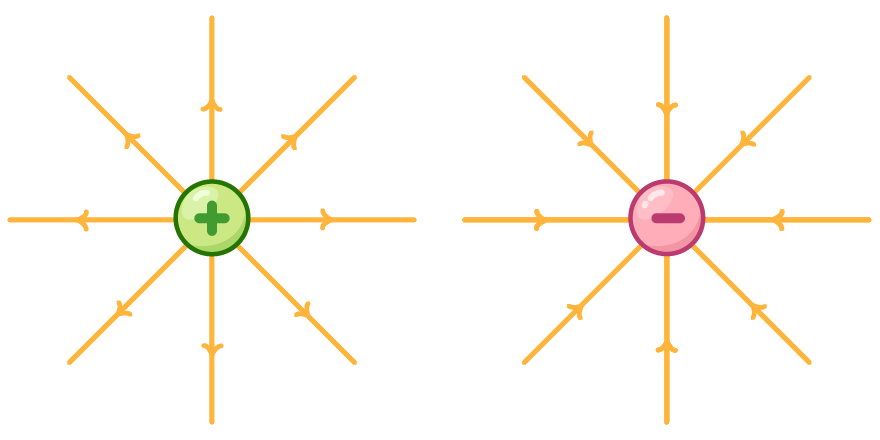Coulomb's Law
This lesson covers:
- The nature of electric charge and the electric fields surrounding charged objects.
- Utilising Coulomb's law to calculate the electrostatic force between point charges.
- The concept of electric field strength.
- The properties of radial electric fields surrounding point charges.
Charged particles attract and repel
Objects with an electric charge (Q) create an electric field in their vicinity. This field exerts forces, either attractive or repulsive, on other charges within its influence.

Key Points:
- Electric charge (Q) is quantified in coulombs (C) and can be either positive or negative.
- Opposite charges attract, while identical charges repel each other.
- A charged particle in an electric field (E) experiences a force (F).
- For objects with a spherically symmetric charge distribution, we can consider the charge as a point charge located at the object's centre.
Electric Fields
Electric fields are visualised using field lines that show the direction and strength of the field at various points.

The direction of the electric field shows the direction of force on a positive test charge placed in the field.
Key points:
- Field lines point away from positive charges
- Field lines point towards negative charges
Calculating electric forces using Coulomb's law
Coulomb's law helps us calculate the electrostatic force (F) between two point charges:
F=4πϵ0r2Q1Q2
Where:
- F = force (N)
- Q1 and Q2 = charges of Q1 and Q2 (C)
- r = distance between the charges in meters (m)
- ϵ0 = permittivity of free space (8.85×10−12 F m−1)
An attractive force between opposite charges results in a negative F.
A repulsive force between like charges results in a positive F.
Coulomb's law follows an inverse square relationship, meaning the force diminishes rapidly as distance increases.
Worked example: - Calculating electrostatic force using Coulomb's law
Calculate the force experienced by a +3 nC and -4 nC point charges, placed 0.5 m apart.
Step 1: Coulomb's law formula
F = 4πϵ0 r2Q1 Q2
Step 2: Substitution and correct evaluation
F=4π(8.85×10−12)(0.5)2(3×10−9)(−4×10−9)=−4.32×10−7 N
Worked example - Calculating distance between two point charges
A +2nC is placed near a +1nC charge. The force experienced by the charges is 2.88 x 10-7 N. Calculate the distance between the centres of the point charges.
Step 1: Rearranged formula
r = √4πϵ0FQ1 Q2
Step 2: Substitution and correct evaluation
r = √4π(8.85×10−12)×2.88×10−72×10−9×1×10−9 = 0.25 m